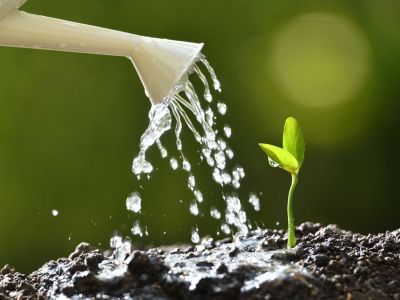Learn how to water seeds properly, thereby maximizing the germination rate.
Safely Watering Seeds
Before planting seeds indoors in a seed tray, water the soil thoroughly so it’s moist, but not wet. Then plant the seeds according to the instructions that came with the seeds. You won’t have to water after they are planted, preventing seed movement. Create a mini greenhouse by covering the seed tray with a plastic tray or plastic wrap. This will keep the moisture and warmth inside, and you shouldn’t have to water again till after the seeds have germinated. After the seeds have germinated and you’ve removed the cover, check the soil at least once a day for moisture level. Alternatively, if you don’t use a cover, plan to water the seeds once a day to keep the medium moist but not wet. Whether watering newly planted seeds inside in a tray or outside in the ground or container, it’s important not to displace the seeds or force them further into the soil.
How to Keep Seeds from Washing Away
Watering a seed tray can be from above the soil line or below the soil line, which many experts prefer.
When watering from above, it’s important to use a gentle spray such as from a mister or spray bottle.When watering from below, add water to a tray under your seed tray. Allow the water to fill about a ¼ inch (6.35 ml.) above the bottom of the seed tray. Keep an eye on the seed container to see when the water reaches the top of the soil. Immediately pour off any remaining water in the tray. A capillary system, which can be purchased, allows water to be drawn up into the soil as needed.
Watering newly planted seeds outside also requires care when watering so the soil doesn’t wash away. Use a hose fitted with a fine spray nozzle or use a watering can equipped with a fine mist spray.
